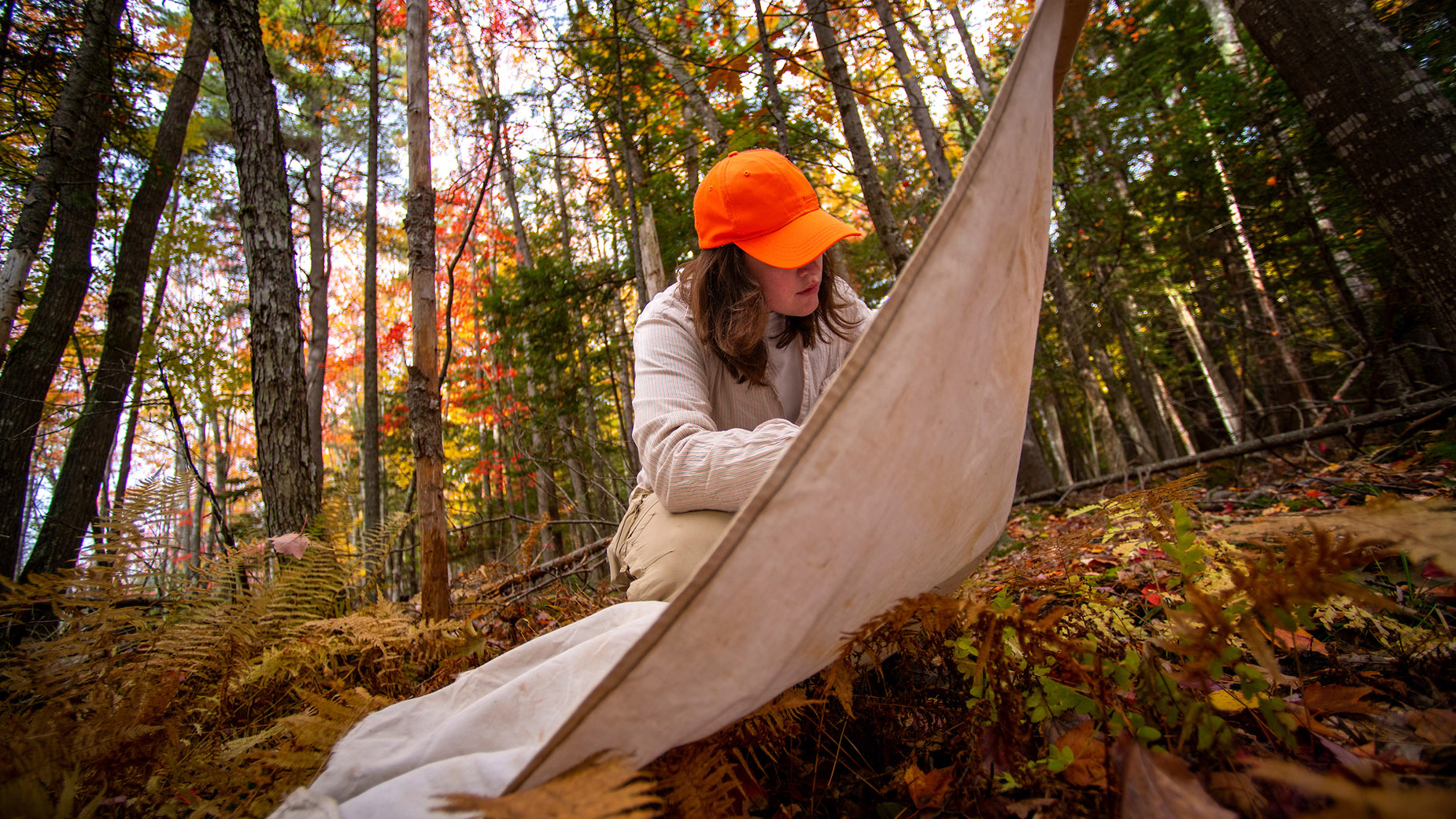
Helping landowners thwart ticks by weeding out invasive plants
A collaborative project between the University of Maine and Vermont State University professors is investigating the connection between ticks and invasive forest plants, as well as working with landowners to develop a solution that can help with both problems.
Climate change is frequently blamed for the increase of blacklegged ticks in New England, as well as the conditions they inflict, such as Lyme disease and babesiosis. However, researchers have found evidence that invasive forest plants, such as buckthorn, honeysuckles, and Japanese barberry, provide the homes ticks thrive in. To investigate this further, UMaine researchers secured a $1.8 million grant from the National Science Foundation.
“This research uses the connection between human health and our environment to combat multiple issues simultaneously,” said Allison Gardner, an associate professor and medical entomologist at UMaine who is one of the project’s principal investigators. “By developing actionable strategies to help landowners target invasive plants, we can also reduce habitats where ticks thrive and tick-borne diseases spread — a win-win for people and the environment.”
The project unites Gardner’s entomology expertise with social, behavioral and environmental scientists, enabling them to seamlessly translate field research into change in the forest. Other principal investigators include UMaine professors Jessica Leahy, a human dimensions of natural resources scholar and forester, and Timothy Waring, an evolutionary and behavioral scientist; as well as William Landesman, an associate professor who studies microbiology and tick-borne pathogens, and Kristen Ross, a plant and restoration ecologist and assistant professor; both of Vermont State University.
This study will survey tick densities in Maine and Vermont, and test management techniques for both ticks and invasive plants. Researchers will also investigate how landowners handle ticks and invasive plants, and how these landowners learn from each other. The researchers will take what they learn and teach landowners how to simultaneously manage ticks and invasive plants. They will also spread their research through a peer-to-peer outreach program called Forest Landowner Education & Research Network (Forest LEARN). LEARN will use landowners to spread the best practices for handling ticks and invasive plants to neighbors and their communities.
Land managers interested in contributing to this research or joining the LEARN network should email jessica.leahy@maine.edu.
Read the full story on the UMaine News website.
